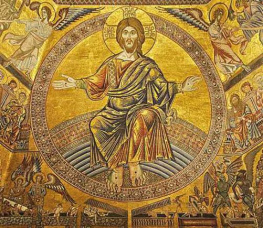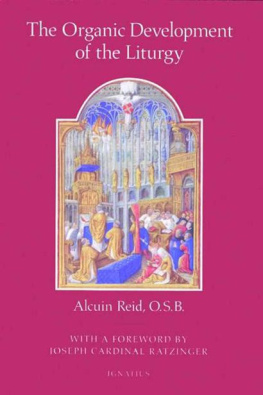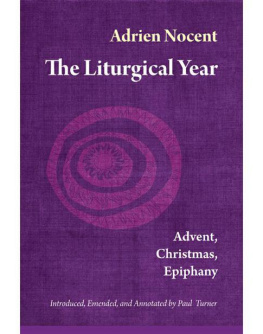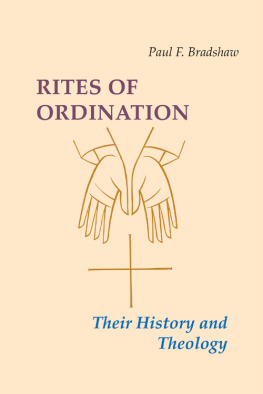The Mass: A Study in the Roman Liturgy
Adrian Fortescue
Table of Contents
Part I. The History of the Mass
Chapter I. The Eucharist in the First Three Centuries
1. Liturgical Fragments in the New Testament
The first source for the history of the Mass is obviously the New Testament. In the New Testament we find the root of the whole matter in the account of the Last Supper. It was because our Lord told us to do what he had done, in memory of him, that liturgies exist. So, obviously, whatever else may vary, in every rite the first thing is to obey that command, to do this, namely, what Christ himself had done. By putting together the four accounts of the Last Supper (Mt. xxvi, 26-28; Mk. xiv, 22-24; Lk. xxii, 19-20; 1 Cor. xi, 23-25) we have the essential nucleus of the holy liturgy in any rite. This at least, we may be sure, was constant from the beginning. It would not have been a Eucharist at all if the celebrant had not done at least this.
Our Lord took bread, gave thanks, blessed and broke it, said over it the words of Institution and gave it to his apostles to eat; then he took a cup of wine, again gave thanks (Luke and Paul do not add this second thanksgiving), said the words of Institution over it and gave it to them to drink. An unimportant displacement of the order postponed the Communion till after both bread and wine were consecrated; the merely verbal discrepancy in the words of Institution between Matthew and Mark on the one hand and Luke and Paul on the other produced a slight variety in the Eucharistic form. Otherwise we have from the New Testament at least this essential rite: 1. Bread and wine are brought to the altar. 2. The celebrant gives thanks. 3. He takes the bread, blesses it and says the words of Institution. 4. He does the same over the wine. 5. The bread is broken, it and the consecrated wine are given to the people in Communion.
But we can find more than this about the earliest liturgy in the New Testament. A number of allusions, though in no fixed order, enables us to add other elements to this nucleus. None of these allusions gives a full description of the way the apostles celebrated the Eucharist. It is only by putting them together that we can to some extent represent the whole rite. Nor is it safe to insist too much on the order in which the functions are mentioned. We see, for instance, in the accounts of the Last Supper that there are slight misplacements of the order (Mt. xxvi, 26; Lk. xxii, 19), even in the words, (Mt. xxvi, 28; I Cor. xi, 25, etc.). The most we can say with certainty is that already in the New Testament we find the elements which make up the liturgy according to the earliest complete account of it (in Justin Martyr), and that in many cases these elements are named in the order they follow in such later accounts.
The Jewish Christians at first continued to attend the services of the Temple with their neighbours (Acts iii, i; Lk. xxiv, 52, 53). Following the example of our Lord (Lk. iv, 15, 16; vi, 6; John xviii, 20) they also went to the Synagogues (Acts ix, 20, etc.). But even before the final breach with Judaism Christians had their own meetings too, where they could worship God according to their belief in Christ. These assemblies are occasionally called Synagogues (James ii, 2; Heb. x, 25). As distinct from the Sabbath they were made chiefly on Sunday (Acts xx, 7; 1 Cor. xvi, 2). At these exclusively Christian meetings naturally they followed the normal order of the Jewish Synagogue service, but with Christian ideas: the services were those of the Synagogue Christianized. There were readings from the holy books, as among the Jews (Acts xiii, 15). St. Paul tells Timothy to read as well as to preach (1 Tim. iv, 13); his own letters are to be read out to all the brethren (1 Thess. v, 27; Col. iv, 16). Evidently Christians read their own books as well as the Old Testament. After the readings came sermons, expositions of what had been read (1 Cor. xiv, 26; Acts xx, 7). They sang psalms (1 Cor. xiv, 26) and hymns (Eph. v, 19; Col. iii, 16). The two are obviously distinct in these texts. There are fragments of rhymed prose in St. Paul, which are supposed to be examples of the first Christian hymns (Rom. xiii, 11, 12; Eph. v, 14; I Tim. iii, 16; 2 Tim. ii, 11-13).
There were prayers said publicly for all kinds of people (1 Tim. ii, 1-2; Acts ii, 42). At the meetings collections of alms were made for the poor (Rom. xv, 26; 1 Cor. xvi, 1-2; 2 Cor. ix, 10-13). These elements, readings, sermons, psalms, hymns, prayers and the collection of alms, we know to have been those of the Synagogue services. Together they formed the normal Christian morning service, as distinct from the Eucharist. To this picture of the morning service we can add details. The people prayed standing, with uplifted hands (Phil, i, 27; Eph. vi, 14; I Tim. ii, 8). This was the Jewish position (Ps. cxxxiii, 1; cxxxiv, 2; Lk. xviii, 11, 13; Mt. v, 5; Ps. cxl, 2; lxii, 5; cxxxiii, 2). The men were bareheaded, the women veiled (I Cor. xi, 6-7). Women were not allowed to speak in Church; Cor. xiv, 34-35). There was a kiss of peace (1 Thess. v, 26; Rom. xvi, 16; I Cor. xvi, 20; 1 Pet. v, 14), a public profession of faith (1 Tim. vi, 12). The people continued the use of the old Hebrew formula Amen ( as an adverb, certainly, truly; so constantly in the Old Testament, Deut. xxvi, 15-26; Ps. xl, 14 etc.) as the sign of their assent after a prayer (1 Cor. xiv, 16); it occurs in the archetype of all prayers, the Our Father (Mt. vi, 13). We may suppose other formulas that occur constantly in St. Paul to be well-known liturgical ones in the Church, as they had been in the Synagogue. Such formulas are for ever and ever (again a Hebraism, Rom. xvi, 27; Gal. 1, 5; cfr. Heb. xiii, 21; I Pet. iv, 11; v. 11; Apoc. i, etc.). God blessed for ever (Rom. ix, 5; i. 25; 2 Cor. xi, 31). Such doxologies and blessings as Cor. xiii, 14; Rom. xi, 36, and the form Through our Lord Jesus Christ (Rom. v, 11, 21; cfr. vi, 12 etc.) have the look of liturgical formulas.
There were two other functions of the first Christian assemblies which disappeared after the first century. These were the Love Feast (Agape, Cor. xi, 20-22; Jud. 12) and the effusion of the Holy Ghost among the people, producing prophecies, ecstasies, speaking in strange tongues, exorcisms and miracles (1 Cor. xiv, 1-40). We meet both again in the Didache; soon after they disappear. Both were obviously open to abuses. St. Paul is not pleased with the way the Agape was held in his time (1 Cor. xi, 22); the effusion of the Holy Ghost disappeared naturally when the first fire of the new movement cooled and enthusiasm gave place to ordered regulations. We may then leave aside these two features and consider only the normal elements that remained, that still exist in all liturgies. There was not a Eucharist at every Christian assembly; but when it was celebrated it was joined to the Christianized Synagogue service described above. In I Cor. xi, 20-34 we see it connected with the Agape; it may be conjectured that it followed that feast. The Eucharist was a well-known service among St. Pauls converts (1 Cor. x, 16); it was a recognized standard by which Christians were known (Acts ii, 42, 46); it took place especially on Sunday (Acts xx, 7). From the order of Acts ii, 42 (the teaching of the Apostles, Communion," breaking of bread, prayers), still more from the invariable order we find in later documents, we may conclude that the Eucharist came at the end of the other service. The people met together, read their books, heard sermons, sang and prayed; then the bread and wine were brought up and the Eucharist was celebrated. The texts show, as we should in any case have foreseen, that this celebration followed exactly the lines of our Lords action at the Last Supper. His command was to do thiswhat he had just done. The repetition of the whole story of the institution, including the words, in Cor. xi, 23-26 argues that the celebrant repeated those actions and said those words. We notice especially the idea of a thanksgiving prayer as part of the rite. In I Cor. xiv, 16 the Amen said by the people is an answer to thy thanksgiving; among the kinds of prayer demanded in Tim. ii, I are thanksgivings. After the Consecration came prayers (Acts ii, 42). Since both our Lord and St. Paul insist on the idea that the Eucharist is a memory of Christ (Lk. xxii, 19), a shewing forth of the Lords death (1 Cor. xi, 24-26), we may conclude that the prayers contained a reference to this. On one occasion at least, at Troas when the young man fell out of a window, a sermon seems to follow the Communion (Acts xx, 11).


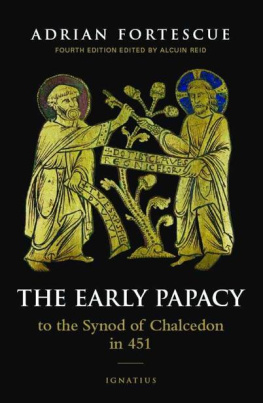
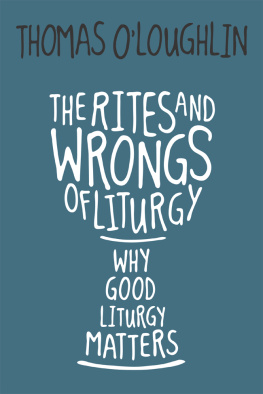
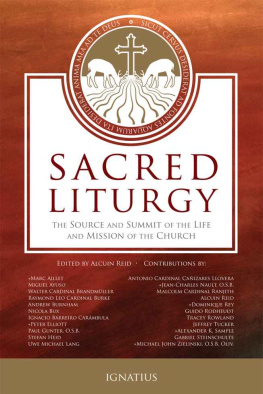
![Pope John XXIII - The Roman Missal [1962]](/uploads/posts/book/272720/thumbs/pope-john-xxiii-the-roman-missal-1962.jpg)
